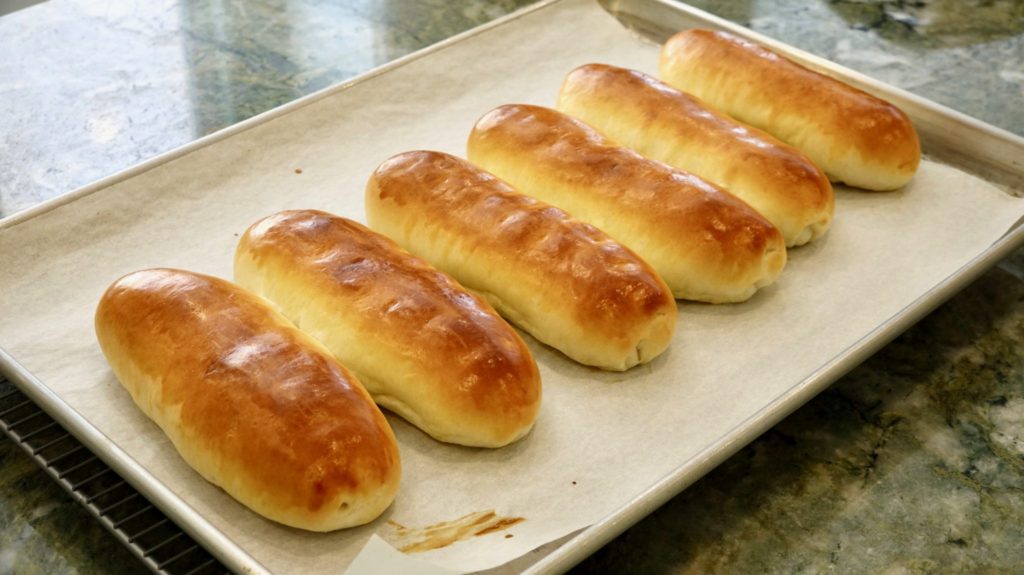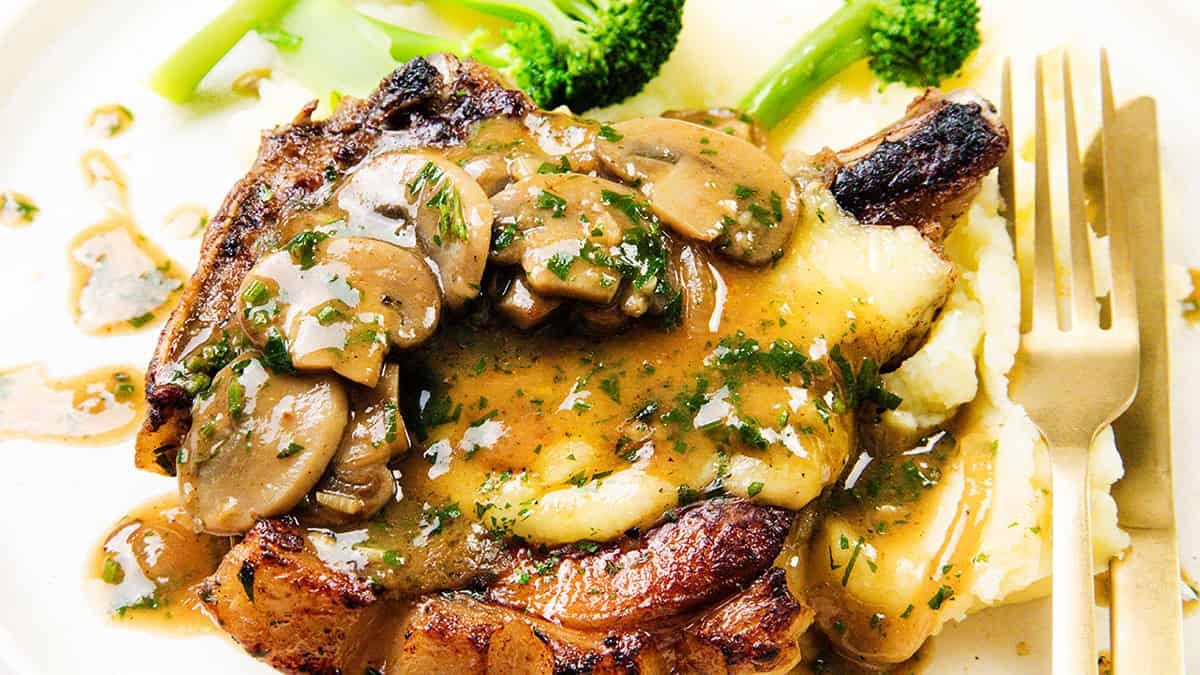Warm up on chilly days with a cosy bowl of classic Japanese oden! This hearty one-pot dish is full of a variety of ingredients like soft daikon radish, chewy fish cakes, and tender chicken simmered in a rich dashi broth. This flavourful comfort meal is a winter staple in Japan and can be found all season at supermarkets, convenience stores, and street food stalls. But if you’re not in Japan or want to eat it any time of year then this recipe will help you recreate authentic oden in your own kitchen!

What is Oden ?
Oden is a Japanese one-pot dish full of various ingredients simmered slowly in a flavorful soup. Typical components include daikon radish, boiled eggs, konnyaku (konjac), fish cakes, and tofu. Some regional variations also include other items like octopus or beef tendon. The ingredients are cooked until tender, absorbing the rich, savory flavors of the broth. Oden is often served in specialty restaurants and izakaya (Japanese pubs) as well as from street carts, convenience stores, and supermarkets during colder months. The dish is typically enjoyed by putting a dab of spicy Japanese mustard on the pieces of oden which adds a zesty kick to the mild, comforting flavors. Oden is a staple dish in winter because it’s warming, satisfying, and deeply nourishing.

Oden Regional Varietiesomfort dish
Oden is a dish loved throughout Japan with regional variations that reflect local tastes and ingredients. In Kanto (Tokyo area/eastern Japan), the broth is flavoured with soy sauce and tends to be darker and stronger, while Kansai (Osaka area/western Japan) prefers a lighter, clearer soup. Nagoya is famous for its miso-based oden, giving it a rich, hearty flavour. Shizuoka’s oden stands out with its dark, almost black broth made from beef sinew and dark soy sauce. In Hokkaido, you might find salmon or cod in the mix, while Kyushu often includes their local specialty, ‘gobō-ten’ (burdock root tempura). Okinawa’s version, known as “Soki jiru,” features pork ribs as a main ingredient. Some areas add unique local touches: Akita includes kiritanpo (pounded rice cakes), while Osaka might throw in octopus or beef tendon. These regional differences highlight the diversity of Japanese cuisine and offer a taste of many oden variations if you have a chance to try them all.
Reference : local oden map by kibun
Ingredients Required to Make Classic Oden
Oden Broth
The broth is a crucial part of oden that gives it its iconic savory flavor. Here are the ingredients needed to create this delicious broth:
- 1500ml water
- Chicken wings: these add depth and richness to the broth. As they simmer, they release collagen, creating a silky texture and adding a subtle meaty flavor.
- Kelp (Kombu): this seaweed adds umami flavor. It’s rich in glutamates, which enhance the overall taste of the broth.
- Bonito flakes (Katsuobushi): these dried, fermented, and smoked skipjack tuna flakes add a smoky, fishy flavor and deepen the umami taste of the broth.
- Soy sauce: this provides saltiness and a rich, complex flavor. It also adds color to the broth.
- Mirin: a sweet rice wine that balances the saltiness of the soy sauce and adds a subtle sweetness to the broth.

Daikon Radish
Daikon is likely the most popular oden ingredient. It has a mild, slightly sweet flavor on its own but it also soaks up the delicious flavor of the broth. As it simmers, it becomes infused with the umami-packed flavors of dashi, soy sauce, and other ingredients. It also becomes soft and has a melt-in-your-mouth texture that contrasts wonderfully with some of the more firm oden ingredients like fish cakes and boiled eggs.

Konnyaku
Konnyaku, also known as konjac, is an essential part of oden. It has a distinctive, jelly-like texture that’s firm yet slightly chewy. Just like daikon, konnyaku itself is quite flavorless but as it simmers it absorbs the umami flavors of the oden broth. It also adds an interesting textural contrast to other ingredients in oden. In oden, konnyaku can be found in various forms – as thin noodles (shirataki), as flat sheets cut into triangles, or as blocks.

Boiled Eggs
Boiled eggs are a classic oden ingredient and add a comforting touch. The eggs are hard-boiled then simmered in the flavorful oden broth, allowing them to absorb the delicious savory flavors. The eggs add a creamy texture and protein boost to the dish. In oden, the eggs are usually left whole, but you can cut them if you wish. This is one of my favourite ingredients in oden.

Nerimono
Nerimono are an essential component of oden for both flavor and texture. Nerimono is the name for processed fish cakes and fish balls made by grinding white fish into a paste, mixing it with various ingredients, and then steaming or boiling the mixture. Nerimono come in various shapes, colors, and flavors, including chikuwa (tube-shaped), hanpen (square and fluffy), and kamaboko (half-moon shaped). In oden, these fish cakes add a soft, bouncy texture and a mild and tasty seafood flavor that complements the other ingredients.

Agemono
Agemono, meaning deep-fried ingredients, come in a variety of forms to add to oden. These typically include items like ganmodoki (deep-fried tofu fritters with vegetables), atsuage (thick deep-fried tofu), aburaage (thin deep-fried tofu), mochi-kinchaku (mochi wrapped in deep fried tofu), or satsuma-age (deep-fried fish cakes with vegetables). Once simmered in the broth, they become soft and infused with the umami broth.

Oden condiments
Along with these traditional ingredients, there are many more things to add to oden. Adding squid and/or octopus provides a tender, chewy seafood element. You can add taro for a starchy, slightly sweet flavor that becomes creamy when cooked. Cabbage rolls, stuffed with meat or vegetables, can be a hearty and comforting addition. Potatoes absorb the savory broth and become soft and flavorful. Thick udon noodles offer a satisfying chewiness and help make the dish more filling. Beef sinew, when simmered for hours, becomes incredibly tender and gelatinous, adding richness to the broth and a melt-in-your-mouth texture.
Must Have Oden condiment : Karashi (Japanese Mustard)
Karashi, a strong Japanese mustard, is an essential condiment for Oden. This bright yellow paste is made from ground mustard seeds and has a sharp, sinus-clearing heat that’s more intense than other mustards. When served alongside oden, a small dab of Karashi is typically placed on the side of the dish or directly on specific ingredients. Its strong flavor provides a spicy contrast to the mild flavors of the oden broth and ingredients. The heat of Karashi also helps to cut through the fattiness of some oden components. You can add some to every bite, or just use it sparingly to add an occasional burst of heat.

Equipment to Make Oden
To make oden, you’ll need a few essential pieces of equipment:
- A large, deep pot or a dedicated oden pot (nabe) to simmer the ingredients.
- A slotted spoon or ladle for adding and removing items from the broth.
- Skewers are often used to pierce and hold certain ingredients together.
- A fine-mesh strainer helps keep the broth clear by removing any floating particles.
- Small dishes or bowls for serving, along with chopsticks for eating.
How to Make Oden
1. Make oden broth
Combine water, kombu (dried kelp), par-boiled chicken wings, and katsuobushi (dried bonito flakes) in a large pot. Bring to a simmer, then strain and set aside (save the chicken wings)

2. Prepare the ingredients:
Daikon : When preparing daikon for oden, it’s typically cut into thick, round slices or large chunks. You’ll also need to score the surface. This allows the radish to maintain its shape during the long simmering process while also allowing it to fully absorb the flavorful broth. Another important prep is to plane off the edges of the radish. This stops it from falling apart during cooking.

Konnyaku : Cut konjac and sprinkle with salt and rub it. Boil water in a saucepan and cook the konjac pieces for 5 minutes. Turn the heat off and drain water. This process helps remove the characteristic smell of konjac.

Egg : Make hard boiled eggs and peel the shell.
3. Add Ingredients to the Broth
Add the daikon, konnyaku, boiled eggs, chicken wings, and all other fillings to the broth and simmer to cook.

Classic Oden Serving Suggestions
Classic oden is traditionally served in a variety of ways. Typically, oden is presented in a large pot with the assortment of ingredients left simmering and developing even more flavour. Everyone can pick out their favourite ingredients straight from the pot. Alternatively, you can serve it in individual bowls. To enjoy oden at its best, serve it piping hot with a side of karashi (Japanese mustard) for dipping. Many Japanese people like to pair oden with a small cup of sake or beer, which complements the dish’s savory flavors. For a complete meal, serve the oden with a bowl of rice and some pickled vegetables on the side.
- The timing of adding ingredients is important. Cook the ingredients in the order that they are hardest to cook or absorb flavor.
- Cook the fish cakes for 10 to 15 minutes so that the flavor of the fish cakes does not get too much into the oden soup.
- The key is to simmer over low heat. High heat can cause the ingredients to fall apart, become clogged, and the broth to become cloudy.
- If the soup becomes too concentrated, taste and add more hot water.
The comforting flavors of classic Japanese oden makes it the perfect one-pot dish for winter. This hearty meal features assorted ingredients simmered in a savory dashi broth.
Prep Time 15 minutes
Cook Time 45 minutes
Servings: 4
Oden Broth
- ▢ 4 cups water *or 1500liter
- ▢ 15 g kombu kelp
- ▢ 4 chicken wings
- ▢ 15 g bonito flake
- ▢ 2 tbsp soy sauce
- ▢ 1 tbsp mirin
- ▢ 1 tbsp sugar
- ▢ ½ tsp salt
Oden Ingredients
- ▢ 4 hard boiled eggs
- ▢ ½ large daikon
- ▢ 3 round konnyaku
- ▢ 2 chikuwa *1 Your choice of Nerimono
- ▢ 4 fish balls on skewers
- ▢ 2 atsuage *2 Your choice of Agemono
- ▢ 4 goboten
- ▢ 8 satsumaage
Prepare Daikon radish
Wash and peel the daikon.
Cut daikon about 2cm(0.8inch) thick and round off the edge.
Prepare Konnyaku
Cut konnyaku pieces in half diagonally to create a triangle shape. Sprinkle and rub salt over the konnyaku.
Boil water in a pot and add the cut konnyaku pieces.
Cook konnyaku in boiling water for 5 minutes. You can turn down the heat to medium while the konnyaku is being cooked.
Drain the cooking water and set konnyaku aside.
Prepare Eggs
Make hard boiled eggs and peel off the egg shell.
Oden stew
Place kombu kelp strip in 4 cups of water in a pot (or claypot) for about 30 minutes.
While the kombu kelp is steeping, parboil chicken wings in boiling water for 1-2 minutes to remove fat.
Put the 4 chicken wings to the oden pot with the kombu kelp and place the pot over medium heat.
Bring it to simmer and add katsuobushi bonito flakes. Turn the heat off and wait until the bonito flakes sink to the bottom.
Drain the kombu kelp, 4 chicken wings, and bonito flakes from the oden broth. Put the 4 chicken wings back in to the broth.
Add the prepared hard boil eggs, konnyaku and daikon to the pot and simmer for 20 minutes.
Add nerimono of your choice such as chikuwa, and agemono of your choice such as atsuage, and simmer for 10 minutes.
Before serving, mix Japanese hot mustard powder with water in a small serving plate for dipping sauce.
Serve oden hot with the mustard sauce.
*1 I used chikuwa and fish balls on skewers. If you can not get access to nerimono, you can make your own following my recipe here.
*2 I used atsuage, tempura, and gobō ten.
Calories: 574kcal · Carbohydrates: 19g · Protein: 60g · Fat: 26g · Saturated Fat: 3g · Cholesterol: 212mg · Sodium: 871mg · Potassium: 441mg · Fiber: 2g · Sugar: 10g · Vitamin A: 260IU · Vitamin C: 19.2mg · Calcium: 58mg · Iron: 1.3mg
Course: Main Dish, Side Dish
Cuisine: Japanese
I want to see it! Tag @chopstickchronicles on social media!
The site and our mobile application may contain links to affiliate websites. We receive a small affiliate commission for any purchase made by you on the affiliate website using such links. Read our disclosure policy.











 English (US) ·
English (US) ·